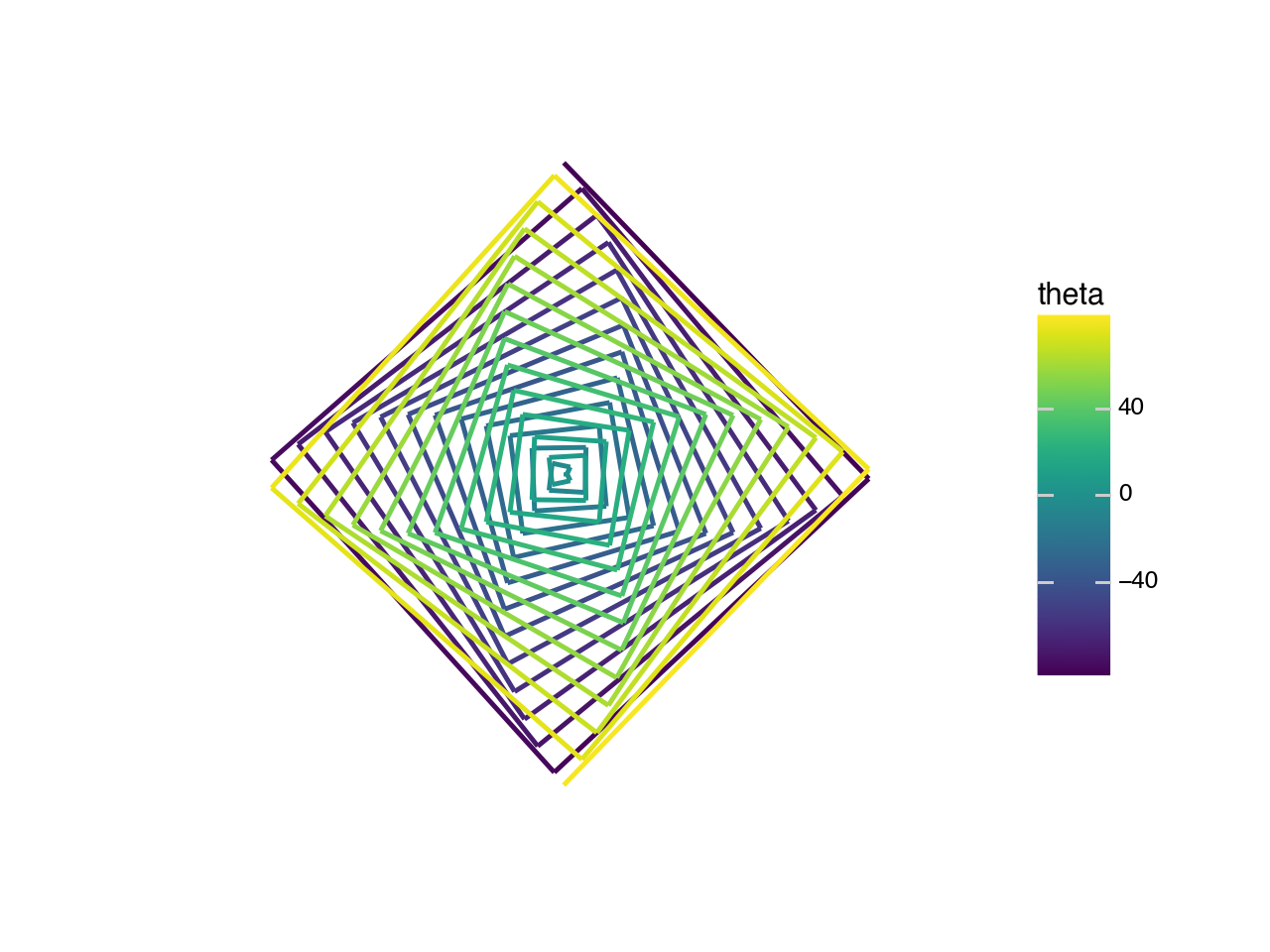import pandas as pd
import numpy as np
from plotnine import (
ggplot,
aes,
geom_path,
theme,
theme_void,
lims
)
from plotnine.animation import PlotnineAnimation
# for animation in the notebook
from matplotlib import rc
rc('animation', html='html5')Spiral Animation
How to create Animations
The PlotnineAnimation methods takes a sequence of plots and animates them. The best way to create the sequence is to use a function that generates plots.
NOTE: When creating the plots make sure all the plots have scales with the same limits for each aesthetic, including the x and y aesthetics.
# Parameters used to control the spiral
n = 100
tightness = 1.3
kmin = 1
kmax = 25
num_frames = 25
theta = np.linspace(-np.pi, np.pi, n)
def plot(k):
# For every plot we change the theta
_theta = theta*k
# Polar Equation of each spiral
r = tightness*_theta
df = pd.DataFrame({
'theta': _theta,
'r': r,
'x': r*np.sin(_theta),
'y': r*np.cos(_theta)
})
p = (ggplot(df)
+ geom_path(aes('x', 'y', color='theta'), size=1)
+ lims(
# All the plots have scales with the same limits
x=(-130, 130),
y=(-130, 130),
color=(-kmax*np.pi, kmax*np.pi)
)
+ theme_void()
+ theme(
aspect_ratio=1,
# Make room on the right for the legend
subplots_adjust={'right': 0.85}
)
)
return p
# It is better to use a generator instead of a list
plots = (plot(k) for k in np.linspace(kmin, kmax, num_frames))
ani = PlotnineAnimation(plots, interval=100, repeat_delay=500)
# ani.save('/tmp/animation.mp4')
aniThe final image of the spiral
plot(kmax)
<Figure Size: (640 x 480)>